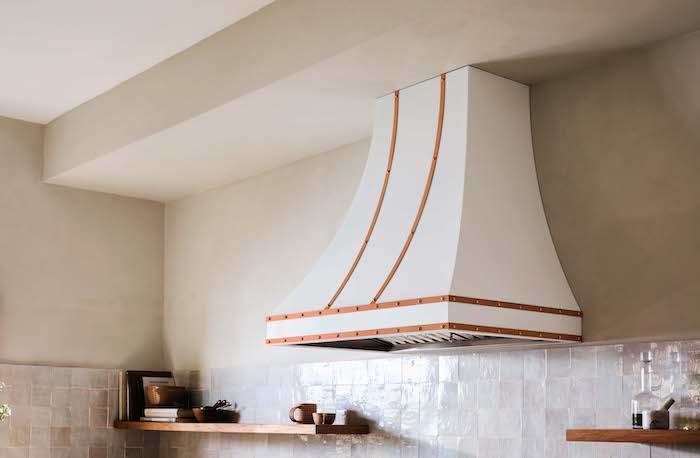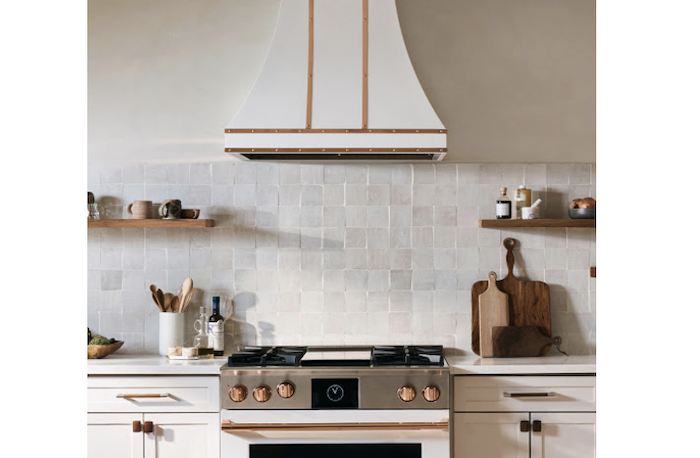Kitchen Ventilation: Range Hood Basics

July 19, 2023
Kitchen Ventilation: Range Hood Basics
This article was originally published on July 19, 2023; it was updated on July 31, 2023.
How often should your clients be turning on their ventilation hood? Do they need it every time they cook? The simple answer is yes. Proper ventilation is essential for maintaining a safe and clean kitchen environment and contributes to overall indoor air quality. Even when preparing smaller meals where the hood is running at a low CFM (cubic feet per minute), ventilation hoods are effective in removing grease particles, smoke and odors from the home.
Here’s a recap of what to look for when selecting a range hood for the kitchen:
Power: The power of the ventilation hood is crucial and should correspond to the power of the cooking appliances. For a powerful range, you will need a ventilation hood that can handle the increased output. Ensure that the hood has sufficient power to effectively remove vapors and particulates from the air.
Size Ratio: Consider the capture area of the hood, which refers to the amount of coverage it provides over the cooking surface. Ideally, the range hood should be at least the width of the cooking surface, with an additional six inches to maximize the capture area. This ensures that the hood effectively manages smoke and steam.
Placement and Height: Proper placement and height of the ventilation hood are essential for optimal performance. The hood should be positioned a minimum of 30 inches above the cooking surface, with a maximum height of 36 inches for most users. It is recommended, though not required, that the hood be six inches wider than the cooking appliance to provide an adequate capture area for heat and grease. The bottom of the hood should not exceed 72 inches above the floor or 36 inches above the countertop. These dimensions promote the safe and efficient operation of the hood.
Speed: The blower of the hood should have sufficient CFMs of power to match the BTU (British thermal unit) output of the cooking appliance. Appliance dealers can often to assist with calculating the ideal CFM.
Proper Use: Proper use of the ventilation hood is just as important as selecting the right model. It is recommended to turn on the hood at least 15 minutes before cooking commences, to draw in the air and prepare the ventilation system. After cooking, leave the hood running for an additional 15 minutes to continue capturing grease particles effectively. Many people are reluctant to use hoods due to the noise they produce. However, it is worth noting that the farther the blower motor is placed from the hood, the quieter the operation will be.
Ducted vs. Ductless Ventilation
If the kitchen has tall ceilings, a duct cover will be needed to elongate the hood. Otherwise, it’s most beneficial to keep the duct line as short and straight as possible. Maintaining the same duct size throughout the entire run maximizes airflow and decreases noise.
Externally vented hoods are often considered the better choice for those who like to purge excessive heat and moisture from the kitchen, as they exhaust stale air out of the building. Recirculating hoods, sometimes the only option, only filter the air and put it right back into the home.
By considering these factors when choosing a ventilation hood for your kitchen projects, you can ensure that your clients’ homes remains clean and healthy. Proper ventilation not only improves air quality but also contributes to the overall cleanliness of your clients’ homes.
—By Ann Muth, director of marketing and customer support at BlueStar
More News
April 26, 2024 | Business, Trends & Inspirations
Personalization Is Defining Today’s Luxury Projects
April 26, 2024 | Business
PIRCH Permanently Shuts Down, Files for Bankruptcy
April 25, 2024 | Awards & Events
2024 Coverings Installation & Design Award Winners Announced
April 24, 2024 | People
Oatey Announces New COO and CCO
April 23, 2024 | Trends & Inspirations
Sustainability Report: More Education Needed for Green K&B Design
April 2, 2024 | Sponsored
Whirlpool Corp. Brings Purposeful Innovation Home
